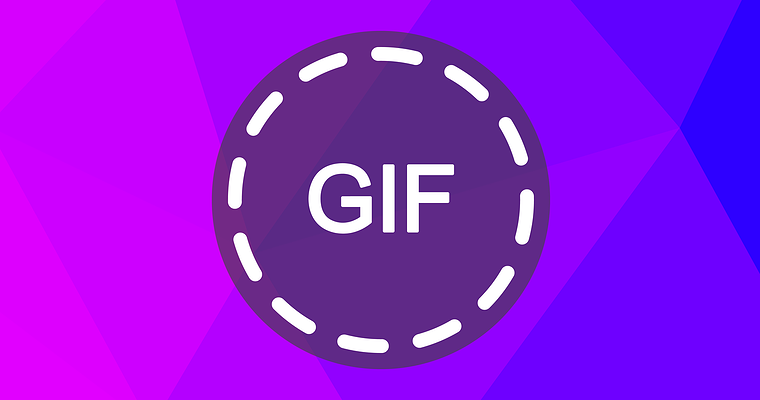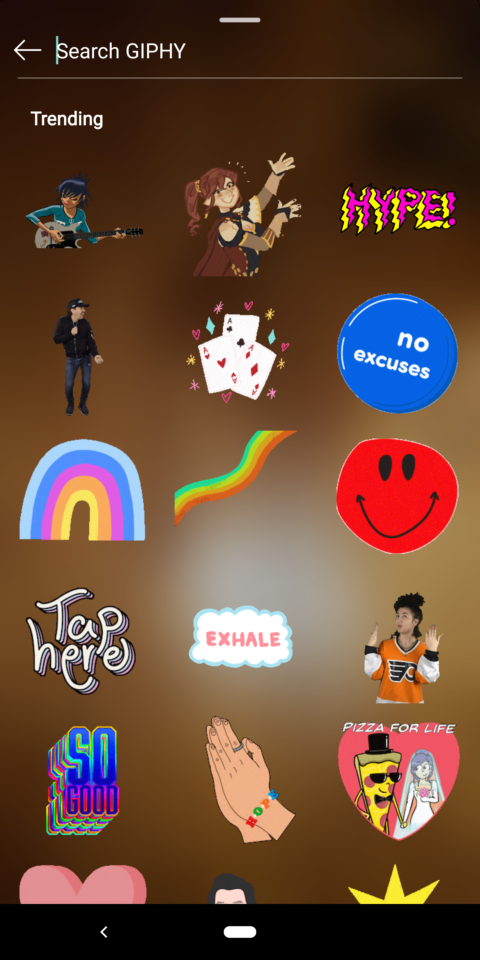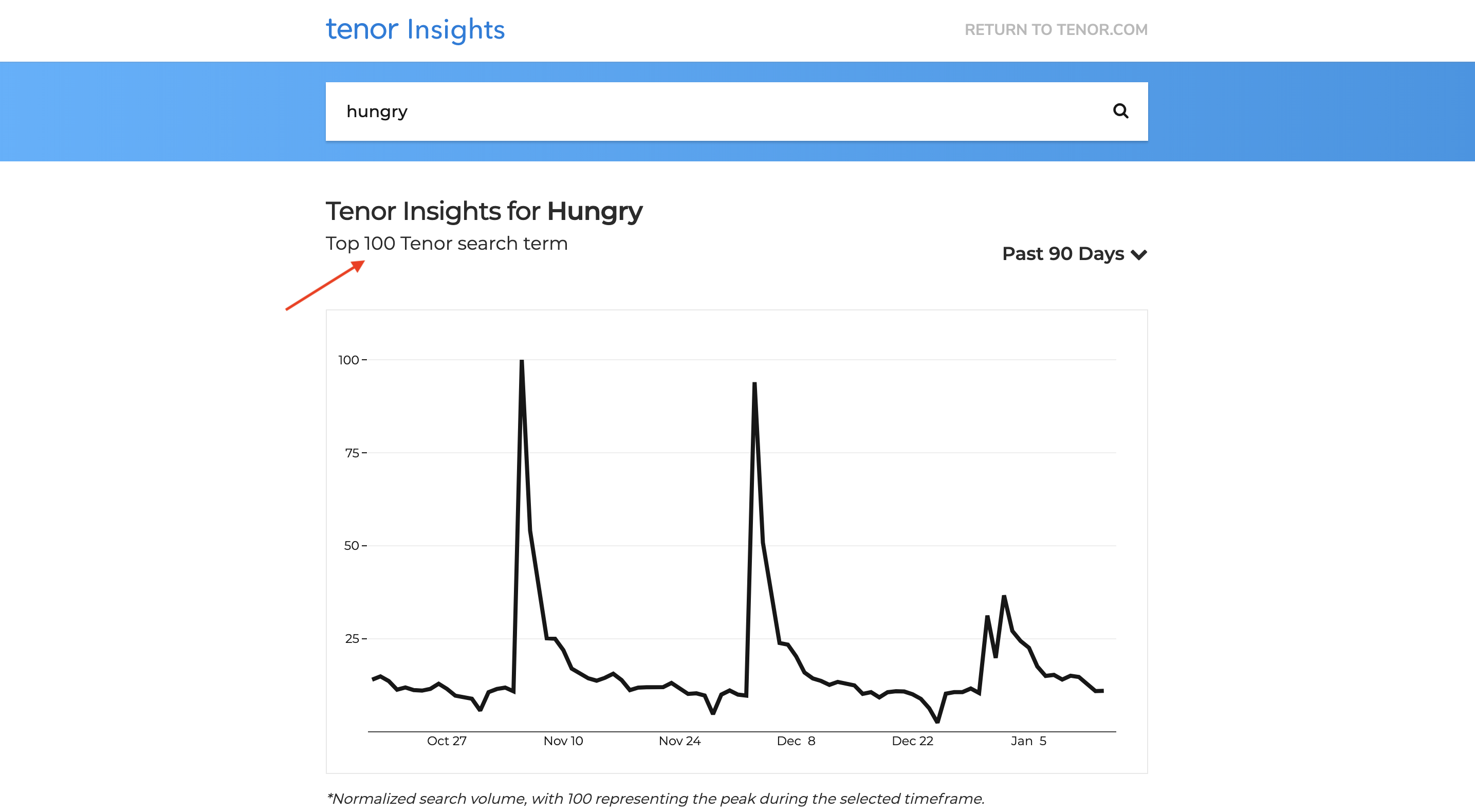
If you’re reading this, you probably know about SEO. You may even be an SEO professional that spends a significant portion of your time reading, talking, and implementing the latest SEO strategies and tactics.
I’m here to introduce you to a new kind of search engine. I’m talking about GIF search engines like GIPHY and Tenor.
GIPHY is by far the biggest GIF search engine, it’s actually the second largest search engine in the world by total searches, only behind Google.
GIPHY serves over 10 billion GIFs daily across messaging and social media apps.
Tenor, another popular GIF search engine, was acquired by Google for an undisclosed amount in March 2018.
Like Google, major GIF search engines have algorithms that decide which content (GIFs) will rank highest in search results.
If you can create and optimize content to rank for keywords that are meaningful to your brand, you’ll increase the chance of your content being seen and shared across messaging and social media apps – and earn hundreds of millions of meaningful brand impressions.
Currently, GIFs as a marketing channel works best for consumer brands, since the main metric to prove ROI is “views” and success is measured in CPMs.
But as GIFs continue to grow and evolve, every brand will want to be leveraging GIFs as a marketing channel.
What Is a GIF?
A GIF is a type of animated image format; if you’re unfamiliar with GIFs or want to understand why they’re becoming so popular, you can check out this article that explains everything you may want to know about GIFs.
How Do People Use GIFs?
GIPHY and Tenor each have their own websites and mobile keyboard apps. This allows users on the web and mobile to search and share GIFs.
GIPHY and Tenor also each have their own API (Application Programming Interface) and SDK (Software Development Kit) which are integrated with nearly every social media platform and popular messaging app.
When you are using a GIF search feature within your favorite messaging or social app, it’s most likely coming from either GIPHY or Tenor – sometimes both.
 GIF Stickers search on Instagram Stories
GIF Stickers search on Instagram Stories GIF Search in messaging app
GIF Search in messaging app
Why Do People Use GIFs?
People use GIFs to express themselves in the digital world.
When having a conversation via a messaging app, people use GIFs to express themselves in a way that punctuation, caps lock, or an emoji just can’t.
GIFs are a way to say what you’re feeling with a four-second short video clip.
The most popular GIFs are “reaction GIFs”, these are GIFs that convey emotions that are typically used in conversations.
Humor, hunger, excitement, sadness, and even love can all better be expressed with a GIF rather than just text alone.
What Is GIF Engine Optimization (GEO)?
GEO is very similar to SEO.
It’s the process of creating and optimizing content to rank highly in organic search results on a GIF search engine.
Like Google, GIF search engines want to provide end-users with the best possible experience by giving them the “correct” answer to a query as fast as possible.
In the SEO world, Google shows the user what it thinks is the most appropriate web link to answer a user query. GIF search engines like GIPHY work in a similar way.
When a user searches for a keyword, GIPHY serves the user a feed of GIFs to choose based on what it deems the most relevant content.
GIF Engine Optimization is made up of a few key steps.
- Keyword Research: Research keywords relevant to your brand that have low competition and high search volumes.
- Content Planning & Creation: Plan and create your content to rank for specific, long-tail keywords that are meaningful to your brand.
- Implementation: Tag your GIFs with relevant keywords when uploading to your preferred GIF search engine.
Keyword Research
Much like the start of your SEO strategy, you begin with keyword research. Your branded keywords from your SEO strategy will most likely be the same in your GEO strategy.
After your branded keywords, you’ll want to think about potential keywords you wish to rank for in two categories. Words that are directly related to your product and emotions that are associated with the effect your product has on customers.
If you are a fast-food restaurant some words that are directly related to your product could be “cheeseburger”, “fries”, “lunch”, etc. Emotion related words could be “hungry”, “tasty”, “yum”, “feed me” etc.
Once you have a steady list of the keywords you want to target you’ll want to do some research into how difficult it will be to rank. There are a few ways to do this. Often it involves using a combination of tools from GIPHY and Tenor.
It doesn’t necessarily matter which platform you are trying to rank on because in most cases a keyword will be equally as competitive on both GIF search engines. This is like how keywords on Google vs. Bing are generally similar in competitiveness.
You can use the Tenor Insights tool to see normalized search volumes of keywords.
Keywords that have high search volumes tend to be the most competitive, so the goal in GEO is to discover keywords that are meaningful to your brand that have medium-high search volumes and a low number of total GIFs.
If a keyword is a “Top 100 search term” on Tenor insights it’s probably a very competitive keyword.
 “Hungry” search on Tenor Insights tool
“Hungry” search on Tenor Insights tool
So what do we do in the SEO world when a keyword has high competition?
We go long-tail.
By making your target keywords and more specific you can find keywords that have lower competition and a better opportunity for you to rank.
0 Commentaires